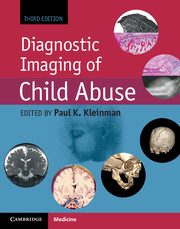Book contents
- Frontmatter
- Dedication
- Contents
- List of Contributors
- Editor’s note on the Foreword to the third edition
- Foreword to the third edition
- Foreword to the second edition
- Foreword to the first edition
- Preface
- Acknowledgments
- List of acronyms
- Introduction
- Section I Skeletal trauma
- Section II Abusive head and spinal trauma
- Section III Visceral trauma and miscellaneous abuse and neglect
- Section IV Diagnostic imaging of abuse in societal context
- Section V Technical considerations and dosimetry
- Index
Foreword to the first edition
Published online by Cambridge University Press: 05 September 2015
- Frontmatter
- Dedication
- Contents
- List of Contributors
- Editor’s note on the Foreword to the third edition
- Foreword to the third edition
- Foreword to the second edition
- Foreword to the first edition
- Preface
- Acknowledgments
- List of acronyms
- Introduction
- Section I Skeletal trauma
- Section II Abusive head and spinal trauma
- Section III Visceral trauma and miscellaneous abuse and neglect
- Section IV Diagnostic imaging of abuse in societal context
- Section V Technical considerations and dosimetry
- Index
Summary
The concept of willful assault upon children by their caretakers is almost incomprehensible. Sometimes the physician needs reassurance that what is seen by physical examination of radiography can be believed. The chapters on the radiologic aspects of child abuse, 2 through 9, present in exquisite detail, with gross microscopic pathologic correlation, the many radiographic findings caused by willful injury to the skeleton and solid organs. The discussion of the incidence and patterns of injury reminds us of the underestimation of the incidence of skeletal injury and that the overall concept of child abuse has been expanded. The discussion of the skeletal survey and the scintigraphic examination of the skeleton shows that each has value – they are more complementary than supplementary.
The chapter dealing with the radiologic dating of fractures is important in the diagnosis of the abused child and also has everyday applicability. The pathophysiology of fracture healing is lucidly presented, as is its modification by repetitive trauma. The discussion of trauma to solid viscera and the central nervous system includes the use of computed tomography and mechanisms of injury; for example, mesenteric injury can result from blunt trauma or sudden deceleration. Involvement of the distal colon and rectum is most often caused by sexual abuse. Inflicted abuse seldom injures the spleen, the kidneys, or the lower urinary tract.
- Type
- Chapter
- Information
- Diagnostic Imaging of Child Abuse , pp. xv - xviPublisher: Cambridge University PressPrint publication year: 2015



